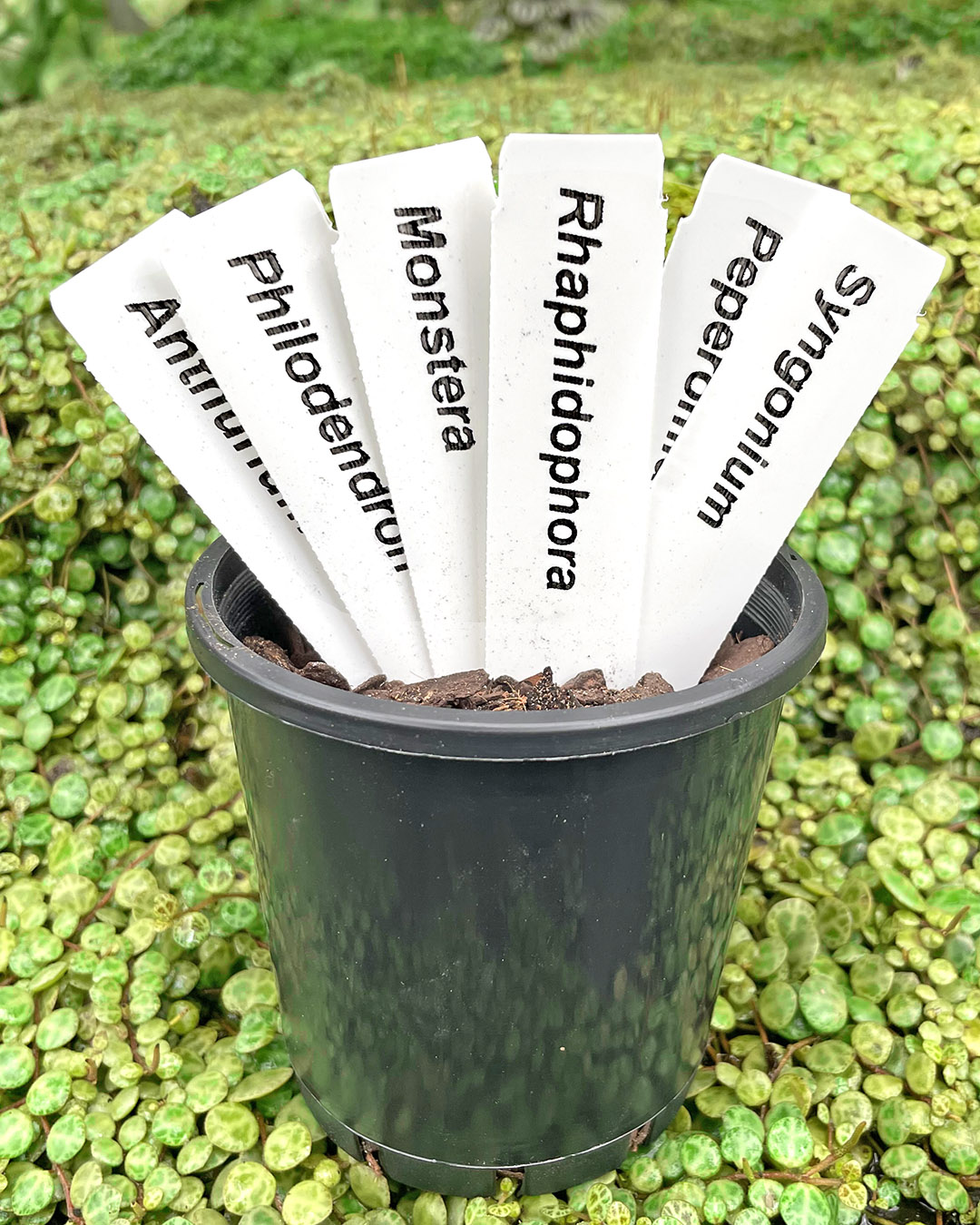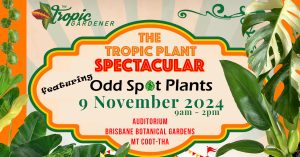
2024 Odd Spot Plants EVENTS
Odd Spot Plants will have MORE rare and unusual plants in MORE locations at MORE Plant Markets and Plant Fairs in 2024… The Tropic Plant

I struggle to remember Scientific names; the Latin is hard to remember; and some of the words a real tongue twister. And I know I’m not alone with this. Even here at the nursery we resort to “common names” at times BUT the Scientific names are super important for clear communication and plant identification.
AND without the proper Scientific names to identify an individual plant confusion reigns.
Take this example. We often get asked do you have a “plowmanii”?
Now is the person asking for Anthurium plowmanii OR Philodendron plowmanii OR Justicia plowmanii OR Gonolobus plowmanii OR something else entirely.
Another common one is “burle-marx”. Over 50 plants bear this name! It’s not just a Philodendron ????
And there are thousands of examples just like these, so I think you can see why the Scientific names are important just from a communication point.
The names are also important in breeding; hybridising and plant species survival.
Again, this is something that is not that difficult, but I constantly see people (plant sellers) interchanging family/genus/species/hybrid – But they are different specific things!
It worries me that people are giving plant advice, growing tips, selling plants and they don’t know the basics of what they are growing. There is danger here, are you really getting what you are paying for; what is the plant providence; if you decide to breed, what do you really have; and what are the plant conservation concerns.
Nomenclature (and even I find this one a tongue twister) is the term used to describe the naming structure of plants and then there is the biological classification hierarchy which also comes into play. Now, both these things change from time to time, and it can get really complex, so I’m just going to touch on the basics.
Can you remember back to biology at school? Yes, I know it’s a long time ago for some of us. But we all were taught that living world is divided into kingdoms and one of those is plants. (It’s all changed a bit recently but what we need to talk about is pretty much the same).
So the Plant Kingdom is divided like this –
Phylum – Class – Order – Family – Genus – Species
And as you work through the list from left to right, the plants get more and more alike.
The main ones we (us mere non-botanist, non-taxonomist mortals) need to think about are Family, Genus and Species.
Family – these are plants that are deemed to be related to each other. This is determined by both vegetative and reproductive feature of the plants. Eg Araceae (Aroids) or Gesneriaceae (Gesneriads).
Genus – even more closely related. Grouped based on the plants’ evolutionary lineage. I’ve heard it being likened to the human surname. The plural of genus is genera. The Genus is the first name we use when calling a plant by its ‘Scientific Name’.
Species – is a group of plants whose members have the same main characteristics and are able to breed with each other. They are pretty much the same, though there may be some minor colour and shape differences – they are in general terms the ‘same plant’. The species is the second name we use when calling a plant by its ‘Scientific Name’.
So, for example, the Swiss Cheese Plant – which is a common name for the plant – has the botanical name of Monstera deliciosa and belongs to the Araceae (Aroid) family. Monstera is the genus and deliciosa is the species.
Sub-species; Varieties and Cultivars – which are a further classification of the species and helps identify small groups that are visually different but still so closely related that they can breed. It is sometimes caused by plants growing in different locations and developing slightly different ‘looks’ or by a trait being ‘seen’ by a propagator and then breeding to further develop that look.
So, with the above example of Monstera deliciosa, one variety is borsigiana so it becomes Monstera deliciosa var borsigiana. Though most of the time we are too lazy to write the ‘var’.
Discrepancies – Even now with the use of DNA sequencing there are arguments between scientists as to the classification of some plants. In the last two decades there has been many name changes (Eg Sansevieria change to Dracaena) and no doubt more to come. It can be frustrating for those of us who need definitive answers but there will always be some debate on some names.
This is probably the most common term that people make a mess of AND this frustrates me the most ????.
Basically, a Hybrid is the breeding of two species together. Species A pollinates species B and seed forms. The seeds that form on Species B are therefore a mix of both A and B. Thus no longer any one species but now a hybrid.
Sometimes they are just named as the cross and it is shown with a ‘x’ or sometimes a hybrid is given their own name which is written with the first letter Upper-case and in inverted commas.
An example is Philodendron gloriosum x Philodendron pastazanum which when given its own name is – Philodendron ‘Dean McDowell’.
It is interesting to note that natural hybrids do occur in the wild. Many of these are still undocumented and can make plant collecting “interesting” ????.
[As a side ,Neil is doing some very interesting Monstera, Philodendron and other hybrids here at Odd Spot Plants – so be sure to follow us to find out more in time to come].
I hope, I have made some sense (?) as it can be a confusing topic. Hopefully now you will know a little more about plant names and it will come in handy as you search for your next dream plant.
Don’t interchange the words ‘genus’, ‘species’ and ‘hybrid’ just because you can, but try to use the correct one!
If you want to delve further there are heaps of articles on the internet. Here are a few more references to get you started. But be warned it is a “rabbit hole” ????.
https://www.biologyonline.com/dictionary/-binomial-nomenclature
https://www.sciencedirect.com/topics/agricultural-and-biological-sciences/botanical-nomenclature
https://www.iapt-taxon.org/nomen/main.php
Happy Growing
Lisa

Odd Spot Plants will have MORE rare and unusual plants in MORE locations at MORE Plant Markets and Plant Fairs in 2024… The Tropic Plant

2024 Tropical Foliage Festival – 23 November 2024 at Belmont Shooting Complex, 1485 Old Cleveland Road, Belmont, QLD. Odd Spot Plants are coming back to

9 Nov 2024 Tropical Plant Spectacular Mt Coot-tha Auditorium @ the Mt Cootha Botanical Gardens, Brisbane QLD. ???? Saturday 9 November 2024???? Mount Coot-Tha Auditorim,